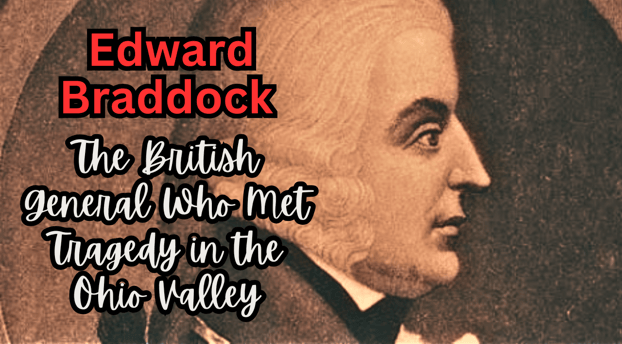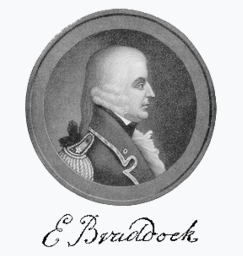Edward Braddock: The British General Who Met Tragedy in the Ohio Valley
Edward Braddock (January 1695 – July 13, 1755) was a distinguished British officer whose career spanned decades and various military theaters. As the commander-in-chief of British forces in North America at the outset of the French and Indian War (1754–1763), Braddock is best remembered for leading a fateful expedition to seize control of the Ohio River Valley. This disastrous campaign not only ended in his death but also marked a turning point in colonial and military history. This article explores Braddock’s life, from his early military career to his role in the French and Indian War, his ill-fated expedition, and his lasting legacy.
Casey Adams
2/10/20254 min read


Early Life and Military Career
Edward Braddock was born in January 1695 into a military family.
His father, Major-General Edward Braddock, served in the esteemed Coldstream Guards, one of the oldest and most prestigious regiments in the British Army.
Following in his father’s footsteps, young Braddock embarked on a military career at the age of 15, when he was commissioned as an ensign in the Coldstream Guards on October 11, 1710.
Braddock’s rise through the ranks was steady, though unremarkable by modern standards.
He was promoted to lieutenant of the grenadier company in 1716 and later attained the rank of captain in 1736 at the age of 41.
His career also included moments of drama. In 1718, he fought a duel in Hyde Park with Colonel Waller, a testament to the codes of honor and rivalry prevalent among officers of the time.
By 1745, Braddock reached the rank of lieutenant colonel, and he gained further recognition during the War of the Austrian Succession (1740–1748).
In 1747, he participated in the Siege of Bergen op Zoom, a Dutch fortress town, which was a significant event in the war.
This experience in siege warfare would later influence his strategic thinking during his North American campaigns.
In 1753, Braddock was appointed colonel of the 14th Regiment of Foot.
The following year, he achieved the rank of major-general, setting the stage for his transfer to North America as commander-in-chief.
Braddock’s Role in the French and Indian War
By the mid-18th century, tensions between Britain and France were escalating in North America.
Both nations sought control over the Ohio River Valley, a strategically vital region that served as a gateway to the western frontier.
The French had fortified key positions in the area, such as Fort Duquesne (located at modern-day Pittsburgh), which the British sought to dismantle to assert their dominance over the contested territory.
In 1754, British colonial forces led by George Washington suffered a defeat at Fort Necessity, prompting the British government to take more direct control of military operations in North America.
In 1755, Edward Braddock was appointed commander-in-chief for the Thirteen Colonies, tasked with coordinating efforts to expel the French and secure British territorial claims.
The Braddock Expedition
Braddock’s most notable campaign was his expedition against Fort Duquesne in 1755, a mission designed to wrest control of the Ohio River Valley from the French.
The expedition was ambitious but fraught with challenges, proving to be a catastrophic failure.
The Plan
Braddock’s plan involved leading a force of approximately 2,100 men, including regular British soldiers from the 44th and 48th Regiments of Foot, as well as colonial militia.
The expedition was also accompanied by artillery, wagons, and supplies, reflecting Braddock’s belief in traditional European-style warfare, which emphasized disciplined formations and heavy firepower.
Challenges
From the outset, the expedition faced significant obstacles.
The heavily forested terrain of the frontier was ill-suited to the large, slow-moving column, and the British forces struggled to build roads and transport their artillery through the wilderness.
Braddock’s insistence on adhering to European military tactics further alienated his colonial allies, including George Washington, who served as a volunteer aide-de-camp.
Washington advised Braddock to adopt more flexible, guerrilla-style tactics better suited to the conditions, but Braddock dismissed these suggestions.
The Ambush
On July 9, 1755, Braddock’s forces crossed the Monongahela River near Fort Duquesne.
As they advanced toward the fort, they were ambushed by a combined force of French soldiers, Canadian militia, and Native American warriors.
The attackers used the dense forest to their advantage, launching a devastating assault from concealed positions.
Braddock’s troops, trained for open-field battles, were unprepared for this style of warfare.
Chaos ensued as soldiers struggled to maintain formation under withering fire.
Despite the disastrous situation, Braddock attempted to rally his men and restore order, but his efforts were in vain.
He was mortally wounded during the fighting, struck by a musket ball.
Death and Aftermath
Edward Braddock died on July 13, 1755, four days after the ambush.
He was buried near Great Meadows in an unmarked grave to prevent his body from being desecrated by enemy forces.
His death marked the end of the expedition, which resulted in heavy losses:
More than 900 British and colonial soldiers were killed or wounded, nearly half the total force.
Despite the catastrophic outcome, the Braddock Expedition had a lasting impact.
It exposed the limitations of traditional European military tactics in the North American wilderness and underscored the importance of adapting to local conditions.
George Washington’s leadership during the retreat earned him widespread praise, laying the groundwork for his future role in the American Revolution.
Legacy
Edward Braddock’s legacy is a complex one.
While his leadership during the expedition is often criticized for its rigidity and lack of foresight, his career reflects the challenges faced by British officers adapting to the unique conditions of colonial warfare.
Braddock’s tragic end also served as a cautionary tale for future military leaders, emphasizing the need for flexibility and cooperation with local forces.
In American history, Braddock is perhaps best remembered for his association with George Washington, who emerged from the expedition as a promising young leader.
Washington’s experiences under Braddock’s command, including his efforts to organize the retreat and his exposure to the brutal realities of frontier warfare, would profoundly shape his military philosophy.
Conclusion
Edward Braddock was a seasoned British officer whose career exemplified both the strengths and limitations of traditional European military practices in the 18th century.
His ill-fated expedition against Fort Duquesne highlighted the complexities of warfare in North America and set the stage for the evolving strategies that would later define the American Revolution.
While Braddock’s life ended in tragedy, his story remains an important chapter in the broader history of the French and Indian War and its enduring impact on the future of the Thirteen Colonies.
Edward Braddock



